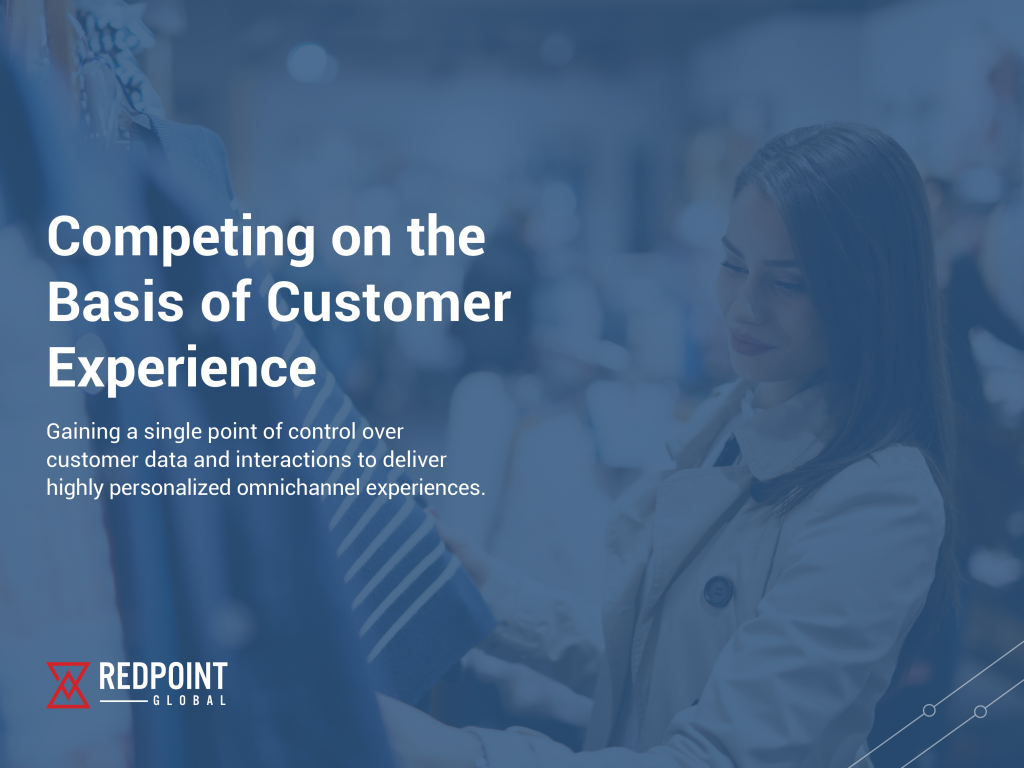 IT has long been a valuable partner to marketing. Particularly for multi-channel B2C marketing programs, marketing has leaned heavily on IT to aggregate, clean, and segment data and to deploy technology to connect with customers.
IT has long been a valuable partner to marketing. Particularly for multi-channel B2C marketing programs, marketing has leaned heavily on IT to aggregate, clean, and segment data and to deploy technology to connect with customers.
Needing some type of structure to facilitate ongoing management of these efforts, businesses have traditionally organized around product lines, channels or business functions. In rare cases, they are structured around customer segments, though these segment lines are typically based on one or two dimensions and are thus drawn broadly. This has proven to be an efficient way to run a business in an era where profits are king, and products provide a high degree of differentiation. Something else is called for in today’s era where customer experience is the key source of differentiation, and profitable growth is king.
According to Gartner, fully 81 percent of companies expect to compete mostly or completely on the basis of customer experience. With a personalized, differentiated customer experience now a strategic imperative for brands looking to increase revenue and customer lifetime value, the long-standing partnership between marketing and IT is evolving. To achieve this level of differentiation, brands must now coordinate resources with a primary emphasis on the customer, not the business. The good news is that current technology enables a “virtual” organization around the customer, even if the formal organization remains as-is. The cornerstone technology elements are ones that meet the empowered customer’s expectations for a seamless experience in an omnichannel environment.
A recent Harris Poll survey, commissioned by Redpoint, underscores the importance of personalizing the customer journey and highlights the gap between customer expectations and what marketing currently delivers. While just 18 percent of consumers polled said that brands deliver an excellent customer experience, 34 percent of brands said that they do. More than one in three customers said they are very frustrated when a brand fails at personalization staples, including sending an offer for something they recently purchased, an offer that is irrelevant, or when a brand does not recognize them as an existing customer. Close to 40 percent said that they will stop doing business with a company that does not offer a personalized experience.
A recent Accenture study also put a price tag on personalization failures, estimating that they cost US firms $756 billion and $2.5 trillion globally.
Personalization Investments on the Rise
CMO investments indicate that personalization is more than a passing fad. According to the most recent Gartner Spend Survey, which analyzes marketing technology spending and key budget trends, “personalization has emerged as a strategically important marketing capability, given the increased focus on customer experience and the fight for customer attention.” The survey reports that CMOs spend an average of 14 percent of their budgets on personalization, with double-digit averages across all industries and business models. In addition, new research from exec search firm Spencer Stuart reports that the average CMO tenure is dropping, falling to an average of 43 months, down from 44 in 2017.
Marketing Drive posits that one reason for the decline is that CMOs, already overseeing all branding, marketing, advertising activity, and related technology, are now also expected to be responsible for customer experience, personalization, and company revenues. With the recognition that personalization drives revenue, marketing becomes the chief stakeholder for creating personalized customer experiences that are relevant for a consumer in the context and cadence of each individual’s customer journey. Marketing is better positioned than IT to take the lead because marketing sits closer to the consumer and has an “ear to the ground” for what motivates the continuously connected consumer.
In this dynamic, marketing does not have the time or luxury to request new or different customer data from IT or to build static product-based programs that fail to recognize each customer as a segment-of-one. As marketing shifts from a support function to a mission-critical line of business and a revenue-generating engine, IT shifts from focusing on efficiency and infrastructure to enabling revenue and innovation.
Don’t Be Left Behind
In the same Harris Poll survey referenced above, 76 percent of marketers surveyed acknowledge that they have “significant room for improvement” in delivering a consistently exceptional customer experience. Asked to expand on the challenges inherent in delivering this experience, roughly half reported that real-time engagement and customer understanding posed the biggest challenges.
The cause of these challenges, marketers said, was not a lack of data but rather fragmented engagement systems that fail to connect or deliver a unified view of the customer across touchpoints. Fragmentation is the reason why, according to the Harris Poll, 63 percent of marketers are unable to execute their customer experience strategy very well.
For marketers to take the lead in delivering an exceptional customer experience that customers demand, they must resolve these key challenges with available technology. To accept limitations is to either ignore the truth that personalization drives revenue, or to take the chance that your business will remain competitive with marketing remaining a support function.
Give Marketers the Right Capabilities
The root cause of the customer engagement gap is a capabilities gap, as evidenced by how many brands struggle to execute their strategies. The first order of business for marketing to lead on is to create an enterprise-wide, easily accessible customer data capability because it is the key to personalization at scale. Personalization is impossible without real-time access to all first-party, second-party, and third-party customer data that make up a single customer view. Marketing needs to spearhead the creation of this golden customer record as the foundation for creating a hyper-personalized customer experience.
Data siloed by marketing channels is, for all intents and purposes, useless for marketing teams that must fashion a real-time response to a customer in an omnichannel buying journey. A real-time response at scale requires AI and machine learning models that serve as a data activation layer, and intelligent orchestration of next-best actions no matter which channel an individual customer shows up in. As the primary stakeholder for personalization, marketing must oversee the models, testing, tuning, and tweaking as necessary with support from IT. Marketing’s bona fides as a creative force underscores the need for marketing to lead a top-down personalization initiative; they can better interpret what’s working and why and more quickly spin up new models that reflect the changing pulse of the consumer.
For marketers to steer the personalization ship across the enterprise without having to combat data siloes that are the bane of keeping pace with the customer, they need to have a single point of control over data, decisions, and interactions. A single point of control combines data of any source, type, or cadence with in-line analytics and an intelligent orchestration layer to offer a personalized next best action to an individual at any phase of a customer journey. Effectively accomplishing this will lead to breakthrough levels of differentiation and revenue growth.
RELATED ARTICLES
Beyond Customer Engagement: Marketing as a Revenue-Driver
Data as a Revenue Engine: Monetize Your Data with a Single Point of Control
Addressing the Gaps in Customer Experience: Redpoint Global/Harris Poll Benchmark Survey

